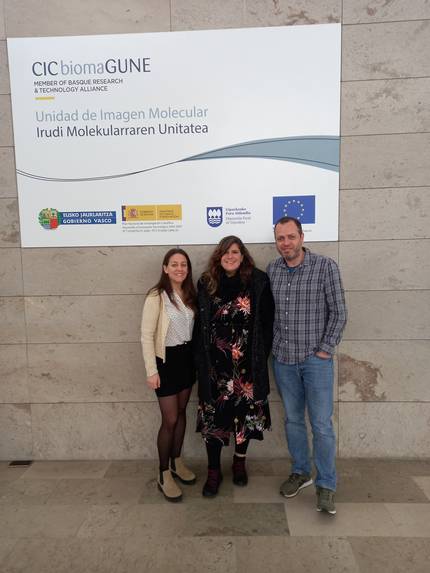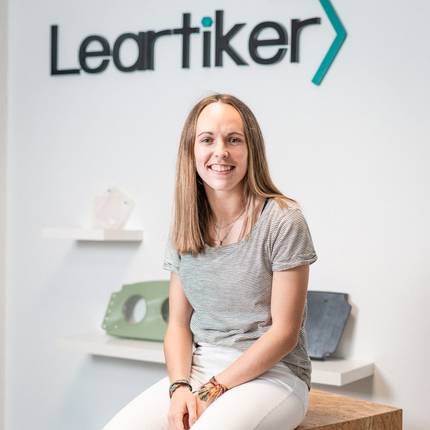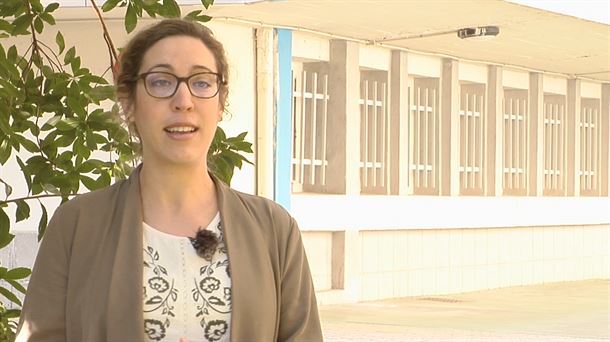Realizing the hope of regenerative medicine
2022/03/14 Elhuyar Zientzia Iturria: Elhuyar aldizkaria
 400
400
In recent years the area of regenerative medicine has aroused great interest. It seeks to complete or recover the functioning of organs, tissues or parts of the body based on materials and structures created in the laboratory. These materials are characterized by their biocompatibility and their capacity for integration and formation in the body. The goal is achieved by combining disciplines like medicine, of course, but also biology, materials, engineering and nanotechnology.
Evidence of this is, for example, the projects being developed at the CICbiomasGUNE of the BRTA consortium and Leartiker. The former has been working on this issue for years. For Leartiker it is a relatively new but very interesting and hopeful field. They are therefore a good example to illustrate the trajectory of regenerative medicine research centers.
Naiara Lasword Agirre, responsible for communication of the CICbiomasGUNE, has explained that the general objective of the center is to develop nanomaterials that allow the knowledge, diagnosis and treatment of different pathologies. Regenerative medicine focuses on three groups working on the need for tissue recreation such as neuronal tissue, cardiopulmonary tissue, bone tissue and cartilage.
Leartiker works on two main areas: food and materials. In the latter, researcher Izar Gorroñogoitia Uribarren focuses on two research areas mainly focused on sustainable transport and health.
Nerves, heart, bones
At CICbiomasGUNE, a group led by researcher Ikerbasque Dorleta Jimenez de Aberasturi, they use hybrids of inorganic (nanoparticles) and organic (polymers, proteins) materials to produce materials capable of responding to different stimuli. 3d printers form complex biological models that analyze physiological and pathological aspects such as the pulmonary artery or breast cancer.
Another example of materials developed in CICbiomasGUNE are carbon nanofibers with electroactive properties. Some tissues need electrical activity to work, like neurons and the heart. Thus, researcher Nuria Alegret Ramón develops 3D conductive scaffolding composed of carbon nanofibers and biocompatible polymers to regenerate spinal cord, sciatic nerve or heart tissues. They emphasize that they are performing well, such as recovering motor functions after spinal cord injury.
Ikerbasque's researcher, Ander Abarrategi López, is investigating at CICbiomasGUNE materials that regenerate bone tissues and cartilages. It uses its components, mainly calcium and proteins, to create 3d biomimetic structures. In addition, in their group they also use collagen, behavior factors and stem cells to know the process of bone and cartilage formation. Its objective is to increase and improve the ossification process, developing materials that already produce bone.
Gorroñogoitia also researches bone tissue and cartilage regeneration in Learticer to offer personalized treatment to people with injuries such as osteoarthritis. It specifies that along with the research of biopolymers for tissue engineering, natural hydrogels are being developed for the subsequent generation of supports or scaffolding with 3D printers. They are also dedicated to the characterization of polymeric materials. Its resources are limited by the lack of facilities for working with cells and therefore collaboration with other centres.
An example of collaboration is the CardioPrint project. 3D is an advanced multifunctional biofabrication project for the creation of therapeutic cardiac tissues. Led by the University of Navarra, Leartiker will participate alongside five other partners. Its function will be the development of cardio mimetic hydrogels, printed by computer modelling. The final objective is to apply it to the treatment of ischemic heart disease.
From knowledge to clinic

Both in CICbiomasGUNE and Leartiker, it is clear that the path from knowledge to clinical application is long and difficult. Therefore, although the ultimate goal is to help patients, they will still have to do a great job at all intermediate steps to see in clinics the advances they develop. They have internalized the need for collaboration and interdisciplinarity, but they also point out other milestones.
For example, animal experimentation in this field is essential to demonstrate its capacity for regeneration, which involves bureaucratic procedures and ethical implications. Once the discovery has been verified, it is necessary to patent it and follow strict clinical trial regulations to convert the research obtained into a clinical application. So, scientists are clear that they're going to have to do a great job to get the research results to the clinic, but they're hopeful, looking for the benefit of patients.

Gai honi buruzko eduki gehiago
Elhuyarrek garatutako teknologia








